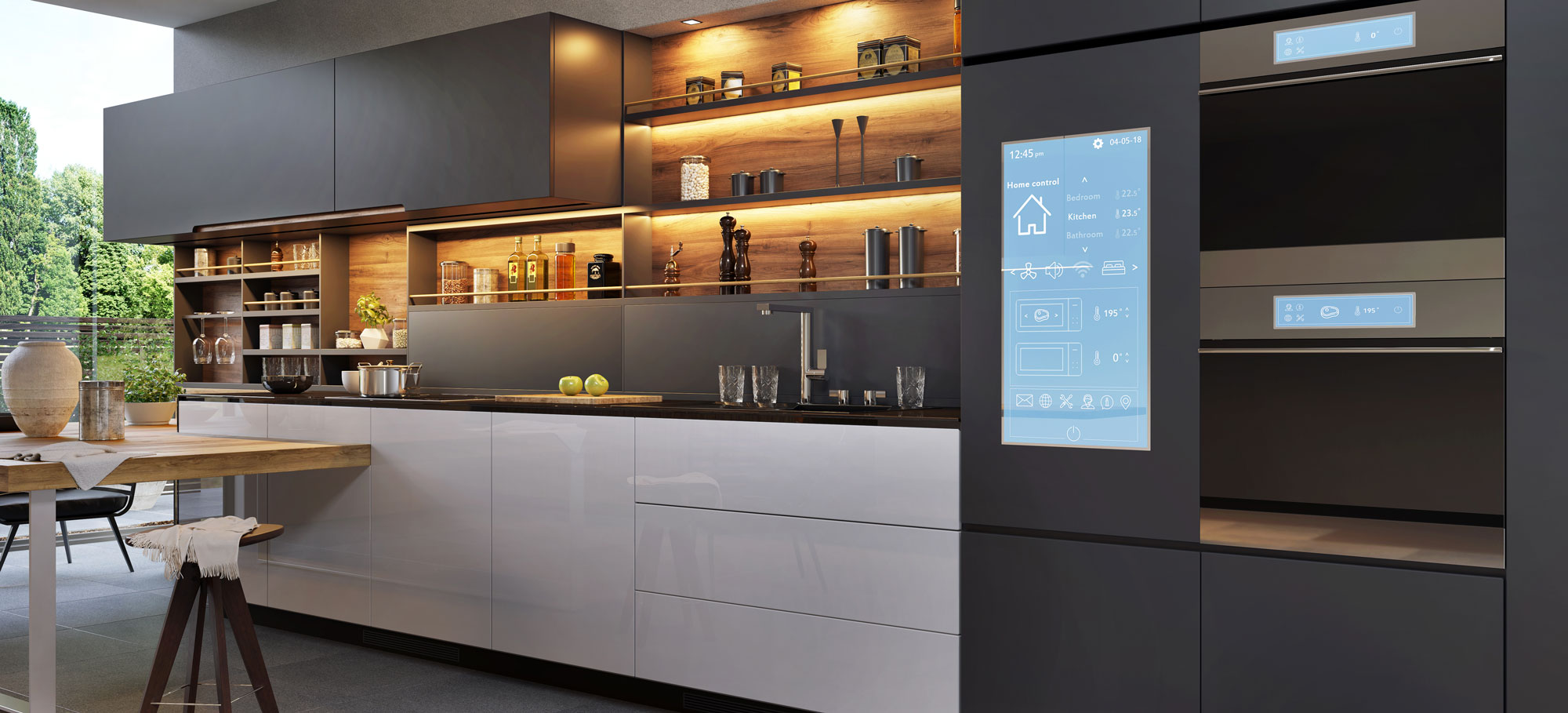- © 2024 Annapolis Home Magazine
- All Rights Reserved

It sounds like something out of a sci-fi story: a technologically advanced house where every appliance operates by itself exactly how it needs to. And all the homeowner has to do is push a button.
But these aren’t homes of the future—these are homes of the present, thanks to advances in what’s commonly known as smart technology or home automation. According to the Home Technology Association, it’s becoming more commonplace thanks to greater reliability and affordability.
In fact, it will soon be unusual for a home to have no smart technology at all. In 2019, Harvard University’s Joint Center for Housing Studies found that more than half of contractors are regularly installing home automation. Mark Sanders with Annapolis-based Pyramid Builders agrees. “Prospective buyers now expect that a system like that will be in place,” he says.
Most people have heard about lights and thermostats you can set on a timer or control from your phone. You lower your heat during the day when you’re away from home and then raise it to be at a comfortable temperature by the time you walk in the door. You dim the lights before bed and have them gradually fade back up before your alarm goes off in the morning.
But what about smart washing machines? These can be operated remotely from a smartphone or tablet, so you can dispense the detergent and start the cycle in the middle of the afternoon to take advantage of your off-peak utility rates. When the cycle is done, you’ll get a push notification on your phone.
Or what about smart fridges? You’ll get an alert on your phone if the door is left open, or you can take a look at what you have inside while you’re running errands if you think you might need to buy more of any particular food.
Or how about smart showers, which can be programmed to your preferred temperature and water pressure?
Or smart toilets, which have heated seats and can flush automatically? Nearly every fixture or appliance in the modern home is being made more functional and more attractive. As Joni Zimmerman of Annapolis-based Design Solutions puts it, “In the last two years, new technology and new features have skyrocketed.”
Zimmerman explains that kitchens today have integrated elements on the countertop, such as cordless charging stations. “So, if you can imagine, you just have a place where you plop down your phone, and it’s charging,” she says.
Another element that can be integrated into kitchen counters: cooktops. It looks and functions like a regular counter until it’s turned on, and then all of a sudden, you can put a frying pan on it to heat up. “You can’t even tell there’s a cooktop there,” Zimmerman says.
But what’s especially convenient about modern smart technology is the way it can all function together when it’s integrated into the same platform, as Kevin Price with Jessup-based Vintage Security explains.“When I want to go to bed at night,” he says, “I hit ‘Goodnight,’ and it turns my alarm system on, makes sure my doors are locked, lowers my blinds for privacy, adjusts the thermostat to the temperature I like to sleep in, and reduces the lights to 50% for another hour and 20 minutes.”
As great as smart home technology can be, it’s not without its drawbacks. The Home Technology Association notes that homeowners should make sure they have a reliable Wi-Fi signal, or else they could get an inconsistent response from their devices.
Reliability tends to be a big concern that Sanders hears from clients. “Most of our homeowners like the idea of automation, but they are concerned about the complexity and the reliability of the systems,” he says. He strives for “balance” so that homeowners can prioritize which features are more important to them without
overcomplicating their house. Furthermore, he points out, technology has become more user-friendly as it has evolved over the years. That’s all-important to the non-technical homeowner.
Make sure the product has a good track record and that you can personally operate it without assistance. Smart technology is supposed to save precious time and bring us joy and peace of mind. Once you go to the trouble of installing a system, you want it to help improve your home. “You can’t just say, ‘Oh, this is lousy, I’m going to replace it’ unless you have money to kill,” Zimmerman emphasizes. “I like to stay with something that’s been out for a couple of years, has proven that it’s reliable, and the price has come down to be a little more affordable.”
While nobody can say for sure what the future of smart technology holds, most experts agree that there’s nothing wrong with waiting a bit before investing in the newest innovation. This advice is bound to save homeowners a lot of stress, especially when considering permanent networks, fixtures, and appliances. Yet, it is exciting to follow each leap, each new advance, and watch the future unfold now, right before our eyes.
Vintage Security, vintagesecurity.com | Design Solutions, Inc, dsikitchens.com, Annapolis Maryland | Pyramid Builders, pyramid-builders.com, Annapolis, Maryland
Annapolis Home Magazine
Vol. 12, No. 1 2021